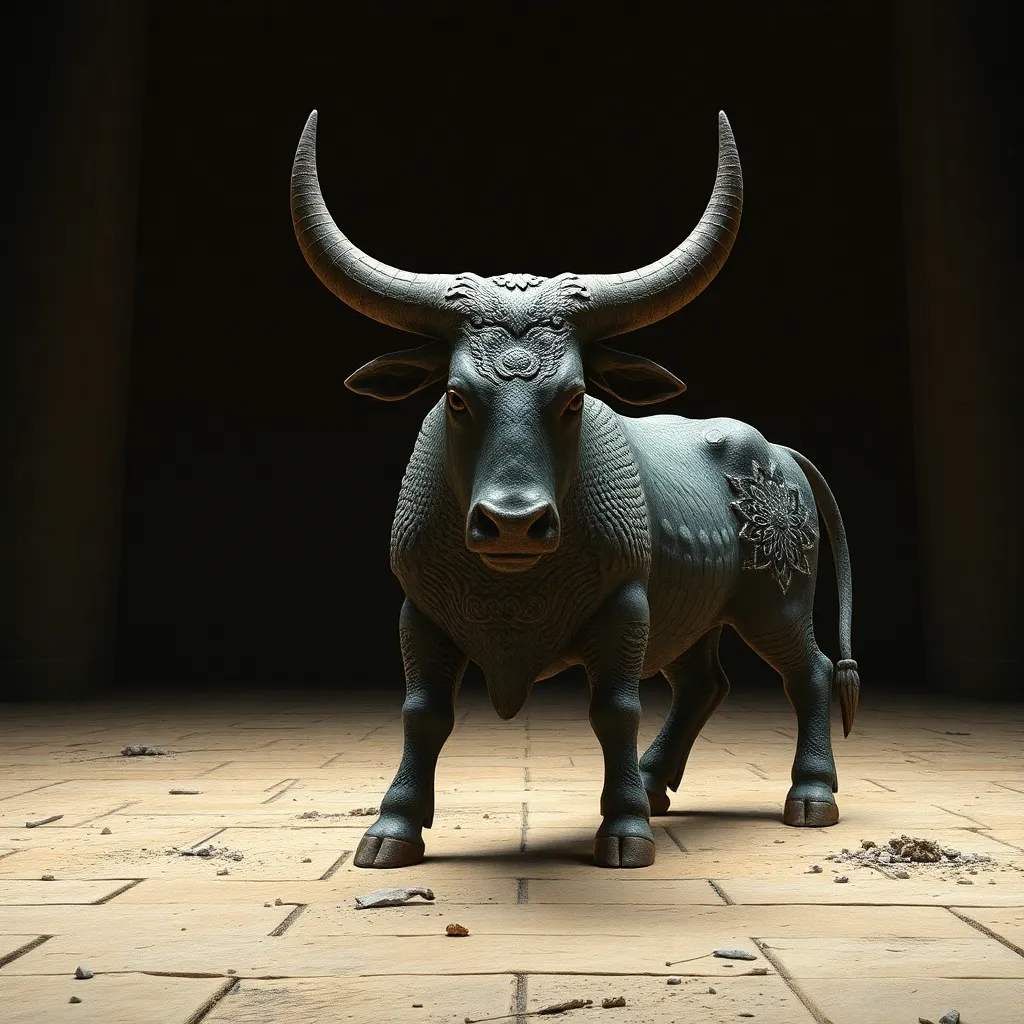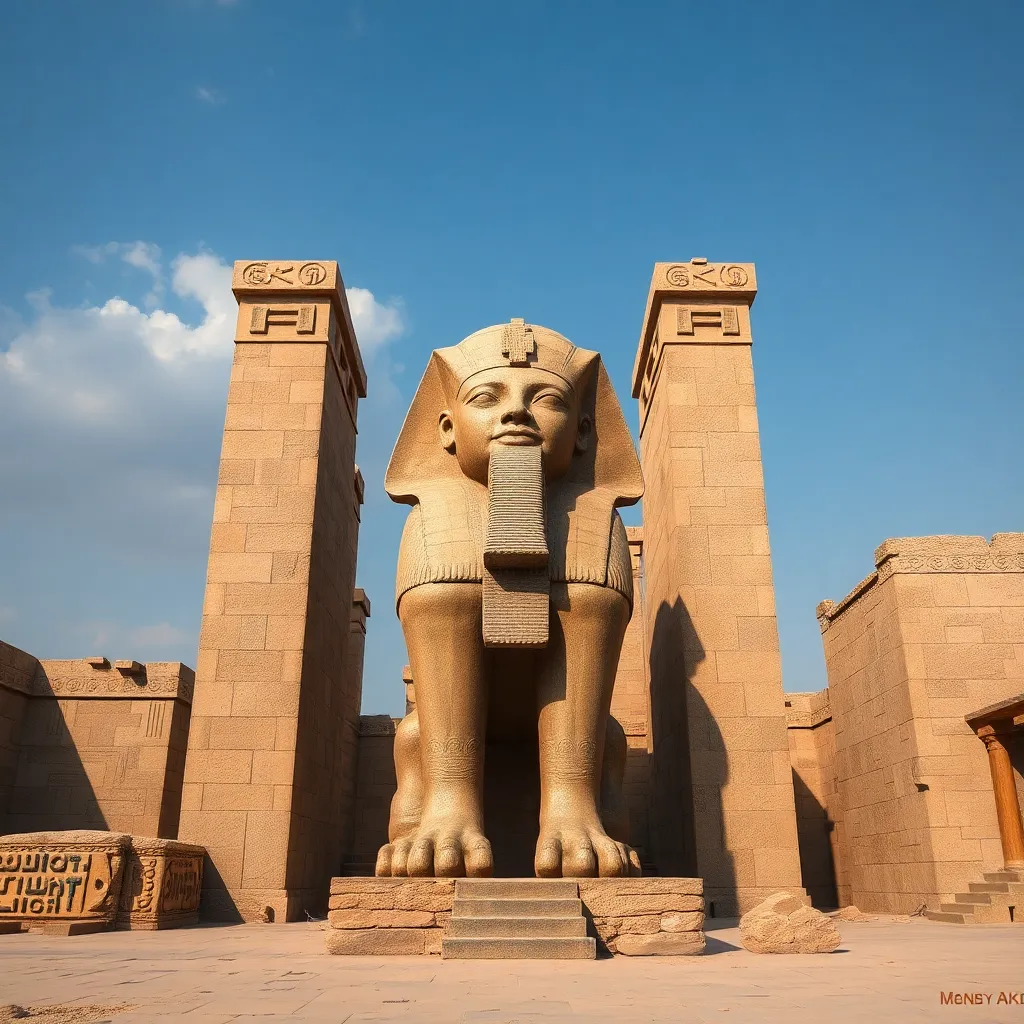The Lamassu and the Myth of the Bull: Investigating Shared Themes and Symbolism
I. Introduction
The Lamassu, a creature with the body of a lion or bull and the head of a human, has long stood as a significant symbol in ancient Near Eastern culture, particularly within Assyrian art and architecture. These monumental figures served not only as decorative elements but also as guardians of cities and palaces, embodying strength and protection. In contrast, the myth of the bull appears across various cultures, symbolizing strength, fertility, and divinity. This article aims to explore the shared themes and symbolism between the Lamassu and the bull myth, highlighting their cultural significance and enduring legacy.
II. Historical Context of the Lamassu
A. Origins and evolution of the Lamassu in Assyrian art and architecture
The Lamassu originated in ancient Mesopotamia around the 9th century BCE, predominantly within the Assyrian Empire. These figures were commonly placed at the entrances of palaces and important buildings, often depicted in a monumental scale. The evolution of the Lamassu can be traced through various artistic styles, reflecting the changing dynamics of power and religion in the region.
B. Role of the Lamassu in ancient Mesopotamian society and mythology
In ancient Mesopotamian mythology, the Lamassu was viewed as a protective deity. It symbolized the strength of kings and the divine right to rule. These hybrid creatures were believed to ward off evil spirits and protect the inhabitants of the cities they guarded. Their presence was a constant reminder of the divine protection bestowed upon the people.
C. Symbolism of protection and guardianship in Lamassu imagery
The Lamassu is rich in symbolism, particularly regarding protection and guardianship. The combination of human intelligence and animal strength embodied in the Lamassu represents the ideal protector, capable of both wisdom and might. This duality serves as a potent symbol of the balance between intellect and power, essential for effective governance and protection.
III. The Bull in Mythology
A. Overview of the bull’s representation in various cultures (e.g., Mesopotamian, Egyptian, Greek)
The bull has been a prominent symbol in various cultures throughout history. In Mesopotamia, the bull was associated with the god of fertility, Enlil, representing strength and agricultural bounty. In Egyptian mythology, the bull was linked to the god Apis, a symbol of regeneration and fertility. The Greeks revered the bull in several myths, including the story of the Minotaur, which explored themes of power and sacrifice.
B. Analysis of the bull as a symbol of strength, fertility, and divinity
Across cultures, the bull is often seen as a representation of:
- Strength: The physical prowess of the bull underscores its role as a symbol of might.
- Fertility: Bulls are frequently linked to agricultural abundance and the fertility of the land.
- Divinity: In many cultures, bulls are regarded as sacred creatures, often associated with gods and rituals.
C. Key myths involving bulls and their cultural significance
Several myths involving bulls highlight their cultural significance, such as:
- The Epic of Gilgamesh: In this tale, Gilgamesh battles the Bull of Heaven, sent by the goddess Ishtar. This story emphasizes the struggle between divine forces and human ambition.
- The Minotaur: The Greek myth of the Minotaur explores themes of power, fear, and the consequences of hubris, showcasing the bull as both a physical and psychological challenge.
- Apis in Egypt: The sacred bull Apis was worshipped as a manifestation of the god Osiris, symbolizing life after death and rebirth.
IV. Comparative Symbolism: Lamassu and the Bull
A. Shared themes of strength and protection in both symbols
Both the Lamassu and the bull symbolize strength and protection, albeit in different contexts. The Lamassu’s role as a guardian contrasts yet complements the bull’s representation of divine strength and fertility. Together, they reflect the necessity of protection in both physical and spiritual realms.
B. The duality of form: hybrid creatures and their meanings
The Lamassu, as a hybrid creature, embodies the merging of human intellect with animal strength, representing a balance of power. Similarly, the bull, often revered in its physical form, symbolizes primal instincts and raw power. This duality highlights the complexities of strength and the need for protection.
C. The role of the Lamassu and the bull in conveying power and authority
Both symbols convey power and authority within their respective cultures. The Lamassu serves as a constant reminder of the king’s divine right to rule, while the bull represents the agricultural strength that sustains society. Together, they illustrate the interconnectedness of governance, protection, and sustenance.
V. Artistic Representations
A. Examination of artistic depictions of the Lamassu
Artistic depictions of the Lamassu are characterized by their imposing size and intricate details, often featuring elaborate carvings that highlight their protective nature. The stone reliefs in Assyrian palaces present them as both fearsome and majestic, embodying the duality of power and wisdom.
B. Analysis of representations of bulls in ancient art
Bulls have been represented in various forms of ancient art, from sculptures and reliefs to pottery and frescoes. These representations often emphasize their muscular form and strength, conveying a sense of reverence and worship. The artistic styles vary across cultures but consistently reflect the bull’s significance.
C. Comparative study of iconography and stylistic elements
When comparing the iconography of the Lamassu and bulls, several stylistic elements emerge:
- Hybrid Forms: The Lamassu’s human-animal hybrid form is paralleled in some bull depictions, emphasizing the blending of human and divine attributes.
- Size and Scale: Both symbols are often depicted in monumental sizes, reinforcing their importance and the awe they inspire.
- Symbolic Details: Both artworks often include symbols of power, such as crowns, weapons, or agricultural elements, signifying their roles in society.
VI. Psychological and Cultural Interpretations
A. The Lamassu as a psychological guardian in ancient belief systems
In ancient belief systems, the Lamassu functioned as a psychological guardian for those who sought its protection. The presence of these figures was thought to ward off evil and ensure safety, reflecting the community’s reliance on both divine and symbolic guardianship.
B. The bull as a representation of primal instincts and community values
The bull represents primal instincts and the values of community, such as fertility and agricultural sustenance. In many cultures, the bull is seen as a unifying force that brings people together for rituals and celebrations, reinforcing social bonds and communal identity.
C. Investigating the psychological impact of these symbols on ancient societies
The psychological impact of the Lamassu and the bull on ancient societies can be profound. Both symbols fostered a sense of security and strength among the people, embodying the ideals of protection and fertility. Their presence in daily life and ritual practices served to reinforce cultural values and collective identity.
VII. Modern Relevance and Interpretations
A. The resurgence of interest in ancient symbols in contemporary culture
In recent years, there has been a resurgence of interest in ancient symbols like the Lamassu and the bull. Artists, writers, and scholars are revisiting these motifs, exploring their meanings and relevance in today’s context. This revival reflects a broader curiosity about our shared human heritage.
B. How the Lamassu and the bull myth continue to influence modern art and literature
The influence of the Lamassu and bull myth can be seen in contemporary art and literature, where themes of strength, protection, and duality are explored. These symbols continue to inspire creative expressions, often reinterpreted to reflect modern concerns and values.
C. The importance of understanding ancient symbols in today’s context
Understanding ancient symbols like the Lamassu and the bull is crucial in today’s context, as they provide insights into the values and beliefs that shaped human civilization. These symbols remind us of the universal themes of strength, protection, and the quest for meaning that resonate across time and cultures.
VIII. Conclusion
In summary, the Lamassu and the myth of the bull represent powerful symbols in ancient cultures, embodying themes



